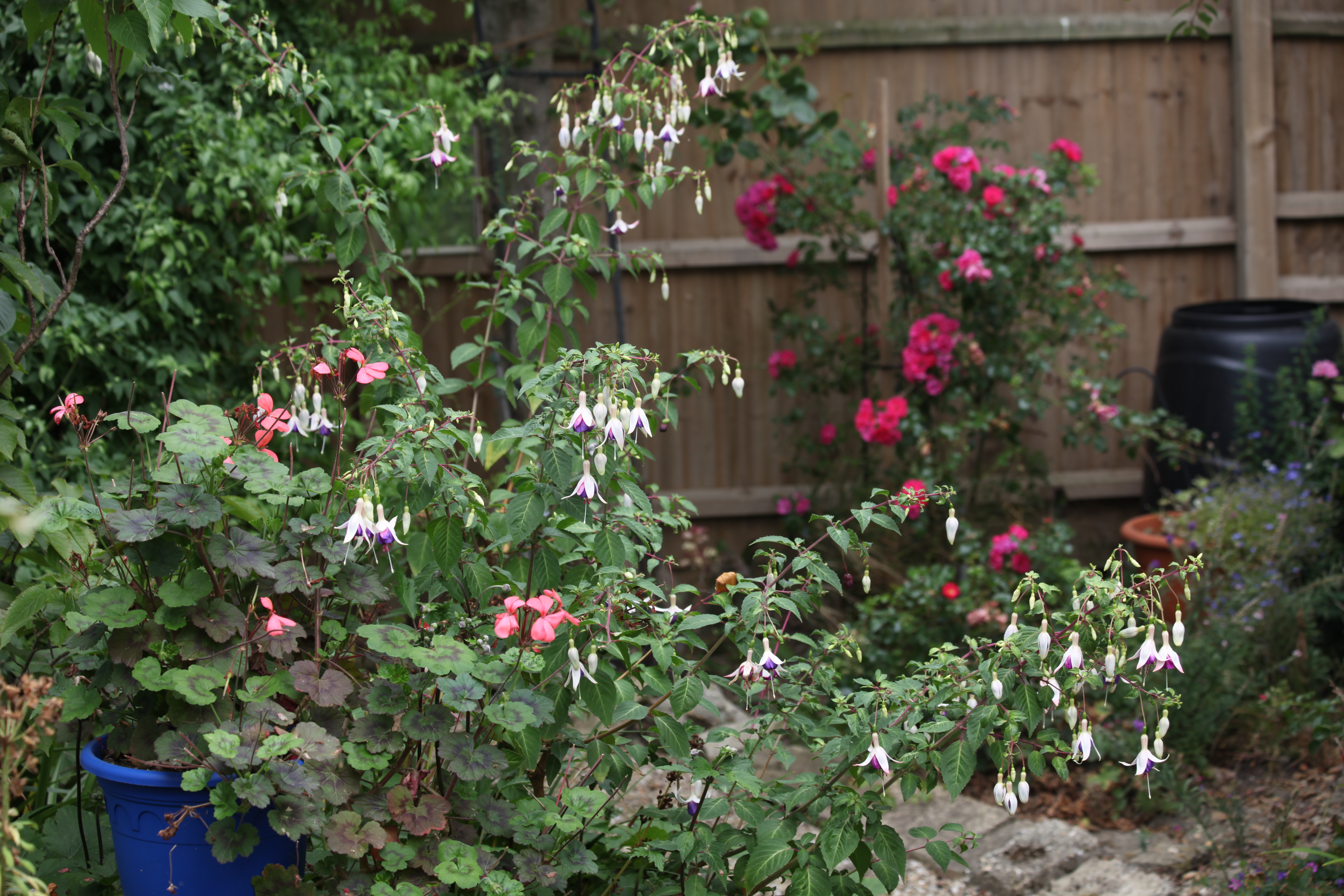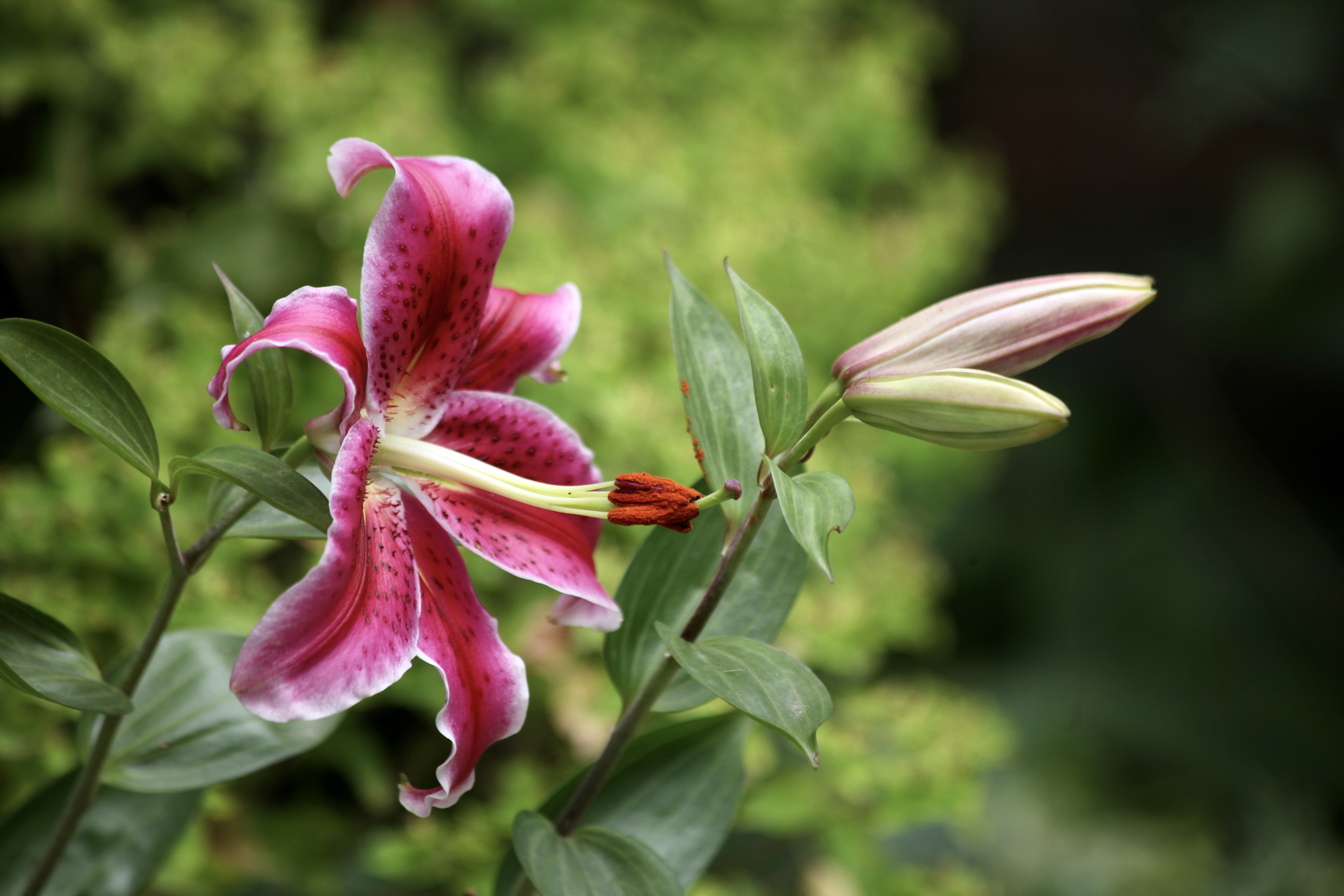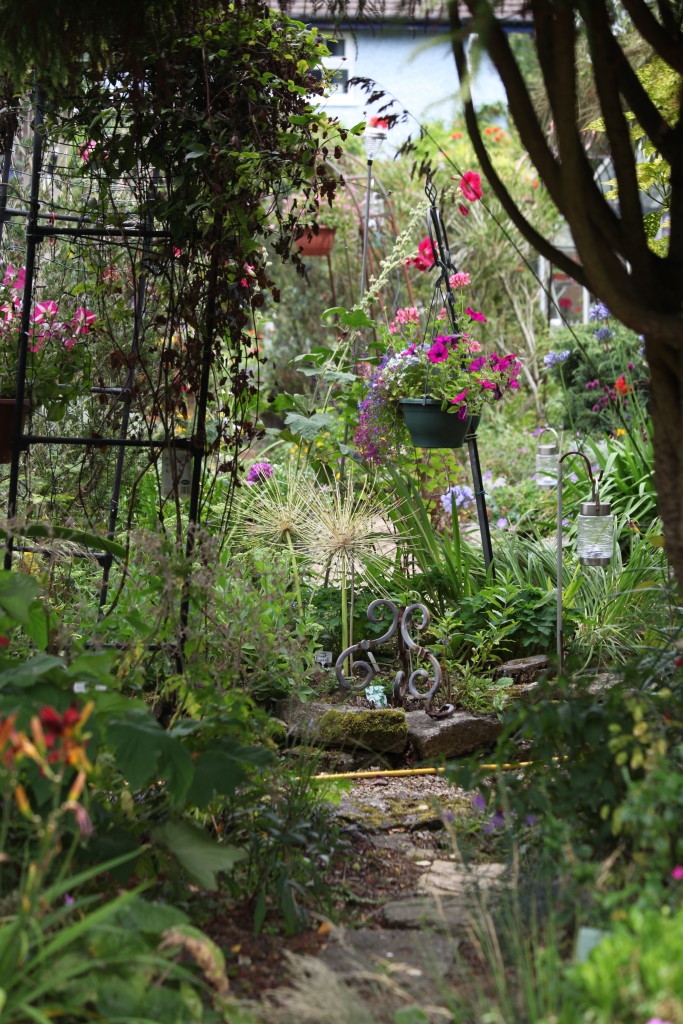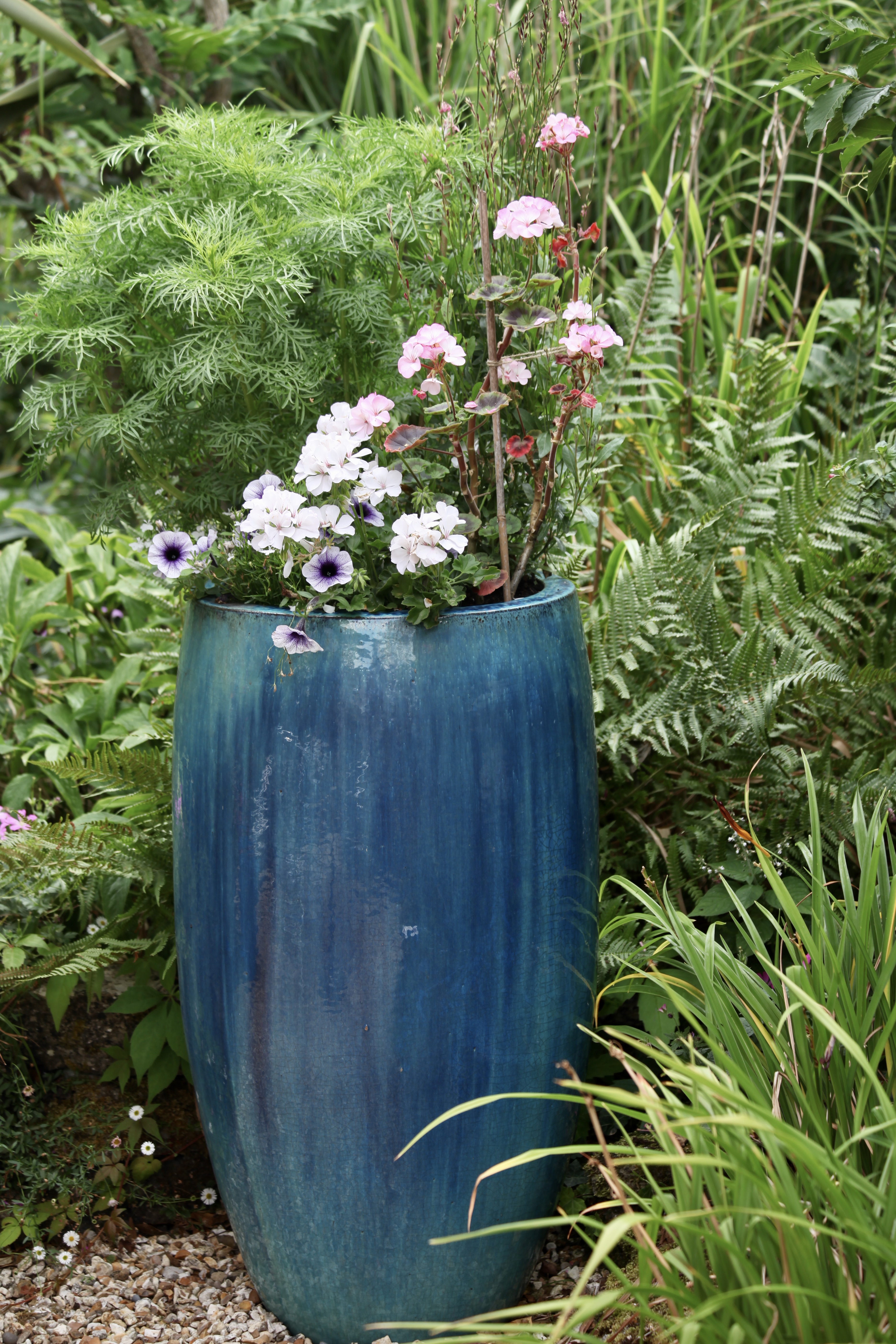During a heavily overcast yet warm morning I took a walk around the garden with my camera.




At the front of the house I photographed just one example of our fuchsia Delta’s Sarah and pink pelargoniums; a severally-hued hydrangea alongside white marguerites with yellow buttery centres; and the first of three rich red lily plants to bloom.

Another Delta’s Sarah is found among pink sweet peas and verbena bonariensis in the Weeping Birch Bed

which can be approached via stepping stones across the Cryptomeria Bed which is named from

the tree seen behind the standing lamp to the right of top centre in this picture of the Gazebo Path.


The white rose, Winchester Cathedral, and the peachy Lady Emma Hamilton are enjoying further flushes in the Rose Garden.


The blue and white petunias in the Ali Baba planter are beginning their descent which will have them cascading like those in this container accompanied by sweet peas, hot lips, and lobelias.
Just before mid-day we drove through a busy Highcliffe intending to brunch at The Beach House café on Friars Cliff. Both the car park and the beach were so crowded that we turned back and lunched at home.
I spent the afternoon finishing reading ‘Love in the time of Cholera’ by Colombian Nobel prizewinner Gabriel Garcia Marquez. This is the entry from brittania.com written by Roberto Gonzalez Echevarria:
Gabriel García Márquez, (born March 6, 1927, Aracataca, Colombia—died April 17, 2014, Mexico City, Mexico), Colombian novelist and one of the greatest writers of the 20th century, who was awarded the Nobel Prize for Literature in 1982, mostly for his masterpiece Cien años de soledad (1967; One Hundred Years of Solitude). He was the fourth Latin American to be so honoured, having been preceded by Chilean poets Gabriela Mistral in 1945 and Pablo Neruda in 1971 and by Guatemalan novelist Miguel Ángel Asturias in 1967. With Jorge Luis Borges, García Márquez is the best-known Latin American writer in history. In addition to his masterly approach to the novel, he was a superb crafter of short stories and an accomplished journalist. In both his shorter and longer fictions, García Márquez achieved the rare feat of being accessible to the common reader while satisfying the most demanding of sophisticated critics.
It must be 30 years since I first read this marvellous novel, and now, I hope, have done so with far greater understanding.
I do not know Spanish, but I am quite certain that Edith Grossman’s translation has contributed greatly to the fluidity of Jonathan Cape’s 1988 edition. The author is clearly a master of the long, eloquent, sentence and it must have taken great skill to convey this.
The book is filled with wisdom, insight, and humour, penned in flowing, natural language. Its theme is a lifetime of loves described in emotional and physical detail with all the accompanying passion, anxiety, intrigue, anguish, guilt, jealousies – you name the feelings – they are there.
What, wondered this reader in the midst of the 2020 pandemic, has cholera to do with the story, which is well told? After all the disease barely merits a mention until the penny drops; I will refrain from telling you when.
This evening we dined on oven fish and chips, peas, gherkins, and pickled onions, with which Jackie drank Hoegaarden and I finished the Fleurie.